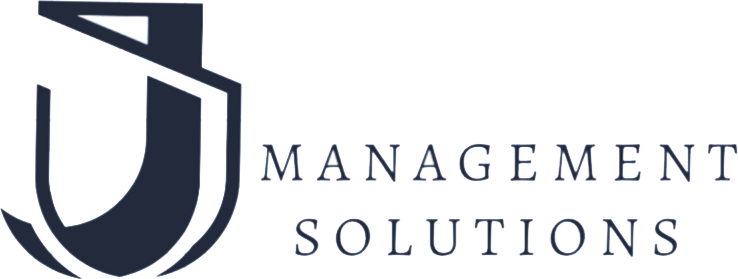
ISO
ISO 9001:2015 Quality Management System
ISO 9001:2015 Quality Management System
Meeting clients’ needs is essential in today’s business. ISO 9001:2015 enables an organization to
have a quality management system that brings out the confidence in your organization’s ability
to provide a product or service that fulfills customer’s needs and expectations.
ISO 14001:2015 Environmental Management System
ISO 14001:2015 Environmental Management System
ISO 14001:2015 is the international standard that specifies requirements for an effective
Environmental Management System (EMS)
The ISO 14001 standards helps the organization in
1. Minimize how their operatives work processes negatively affect the environment
(ie. Cause adverse changes to air, water, or land)
2. Comply with applicable laws, regulations, and other environmentally oriented
requirements
3. Continually improve in the above points
It provides a framework that an organization can follow, rather than establishing environmental
performance requirements. The framework used is a Plan Do Check Act approach to
continuously improve the Environmental Management System.
ISO 45001:2018 Occupational Health and Safety Management System
ISO 45001 is an international standard that specifies requirements for occupational health and safety management systems. It provides a framework for organizations to proactively improve employee safety, reduce workplace risks, and create safer working environments.
This standard helps organizations establish policies and procedures to prevent work-related injuries, illnesses, and fatalities. ISO 45001 emphasizes the importance of leadership commitment, worker participation, hazard identification, risk assessment, and continual improvement in occupational health and safety practices.
By implementing ISO 45001, businesses demonstrate their commitment to prioritizing employee safety, reducing workplace incidents, and fostering a culture of health and safety within their organization.
ISO 22000:2018 Integrated Food Safety Management System
ISO 22000 is an international standard for food safety management systems. It outlines the requirements for organizations involved in the food chain to ensure food safety at various stages, from production to consumption.
This standard focuses on identifying and controlling food safety hazards to ensure that food is safe for consumption. It encompasses processes such as hazard analysis, implementing control measures, and establishing a system to manage food safety risks.
ISO 22000 is designed to help organizations in the food industry demonstrate their ability to control food safety hazards and ensure that their products are safe for consumers. It can be applied by any organization in the food chain, including farms, food manufacturers, processors, transporters, and retailers.
ISO 27001:2022 Information Security Cyber Security Privacy protection Information Security Management System
ISO 27001 is an international standard for information security management. It sets out
requirements for establishing, implementing, maintaining, and continually improving an
information security management system within an organization. Compliance with ISO 27001 demonstrates a commitment to managing and protecting sensitive information.
ISO 27001 is valuable because it provides a systematic approach to managing sensitive
information, reducing risks related to data breaches, ensuring compliance with laws and
regulations, enhancing business credibility, and establishing a framework for continual
improvement in information security practices. Ultimately, it helps organizations safeguard their data and build trust with stakeholders.
Implementing ISO 27001 can benefit a business in several ways:
1. Enhanced Security: It establishes a robust framework to identify, manage, and reduce
information security risks.
2. Compliance: It helps meet legal, regulatory, and contractual requirements related to data protection.
3. Customer Confidence: Demonstrates commitment to safeguarding sensitive information, earning trust and credibility with customers and partners.
4. Improved Processes: Encourages systematic management of security processes, leading to increased efficiency and effectiveness.
5. Risk Management: Identifies and mitigates potential security threats, reducing the
likelihood of data breaches.
6. Competitive Advantage: Differentiates a business by showcasing a commitment to strong security practices, potentially attracting clients who prioritize data security.
Overall, ISO 27001 helps businesses mitigate risks, protect sensitive information, and operate more securely in an increasingly digital world.
ISO 21001 – Educational Organizations Management System (EOMS)
ISO 21001 is an international standard that provides a management system framework specifically for educational organizations. It ensures that institutions consistently provide quality education that meets learners’ needs and enhances their satisfaction.
This standard is applicable to all types of educational institutions—such as schools, colleges, universities, coaching centers, and training organizations—regardless of size or delivery method (online or offline).
Key Benefits of ISO 21001:
Learner-Centered Approach: Enhances focus on the individual needs and expectations of learners.
Quality Education Delivery: Improves the effectiveness and consistency of educational services.
Credibility and Trust: Builds confidence among learners, parents, and stakeholders through internationally recognized quality standards.
Inclusivity: Supports inclusive education and equitable access for all learners.
Continuous Improvement: Promotes a culture of evaluation, feedback, and ongoing development in education systems.
Core Principles of ISO 21001:
Leadership and commitment
Involvement of people
Process-based approach
Continuous improvement
Evidence-based decisions
Social responsibility
Accessibility and equity
Data security and privacy (especially in digital learning platforms)
ISO 21001 helps educational institutions deliver consistent, high-quality learning experiences, meet regulatory requirements, and promote lifelong learning. It demonstrates a commitment to educational excellence and continuous improvement for both learners and educators.
ISO 13485:2016 Medical devices – Quality Management System – Requirements for Regulatory Purpose
ISO 13485:2016 Medical Devices – Quality Management System – Requirement for Regulatory
purposes
Medical devices are essential as they benefit both patients and health care industries either in diagnosis, prevention, or provision of treatment to improve quality of life. Examples of medical devices include an instrument, machine, implant or in vitro reagent which are used for medical purpose. The intended used and indications for use differentiates a medical device from one another.
Regulatory requirements in medical devices industry are increasingly stringent on every step of the product’s life cycle to ensure safety and quality performance of meducal devices produced.
ISO 50001: Energy Management Systems (EMS):
ISO 50001 is an international standard that provides organizations with a framework to systematically manage and improve their energy performance. It aims to help businesses become more energy-efficient by reducing energy waste, improving energy use, and implementing cost-effective energy-saving measures. It was first published in 2011 and is periodically revised—the current version is ISO 50001:2018.
Key Objectives
- Reduce energy consumption and cost
- Improve energy efficiency and usage
- Support sustainability and carboon footprints reduction
- Comply with energy regulation and policies
Core Structure: The PDCA Model
ISO 50001 uses the Plan-Do-Check-Act (PDCA) cycle for continuous improvement:
1. Plan – Establish an energy baseline and objectives.
2. Do – Implement action plans for energy performance.
3. Check – Monitor and measure the results.
4. Act – Take corrective action and update plans.
Key Components
• Energy Policy – A formal commitment to energy management.
• Energy Review – Analyzing energy data and identifying areas of significant energy use.
• Performance Indicators (EnPIs) – Metrics for tracking progress.
• Energy Baseline – A reference point for comparison.
• Action Plans – Strategies to meet energy objectives.
• Monitoring, Measurement, and Analysis – Tools for data-driven decisions.
Contact info
- +91 78937 12421
- support@jvmanagementsolutions.com
- 1st floor , 12-1-1241, shanthinagar, North Lalaguda, Secunderabad, Hyderabad, Telangana. 500017
Quick link
© 2023 JVMS. All rights reserved


